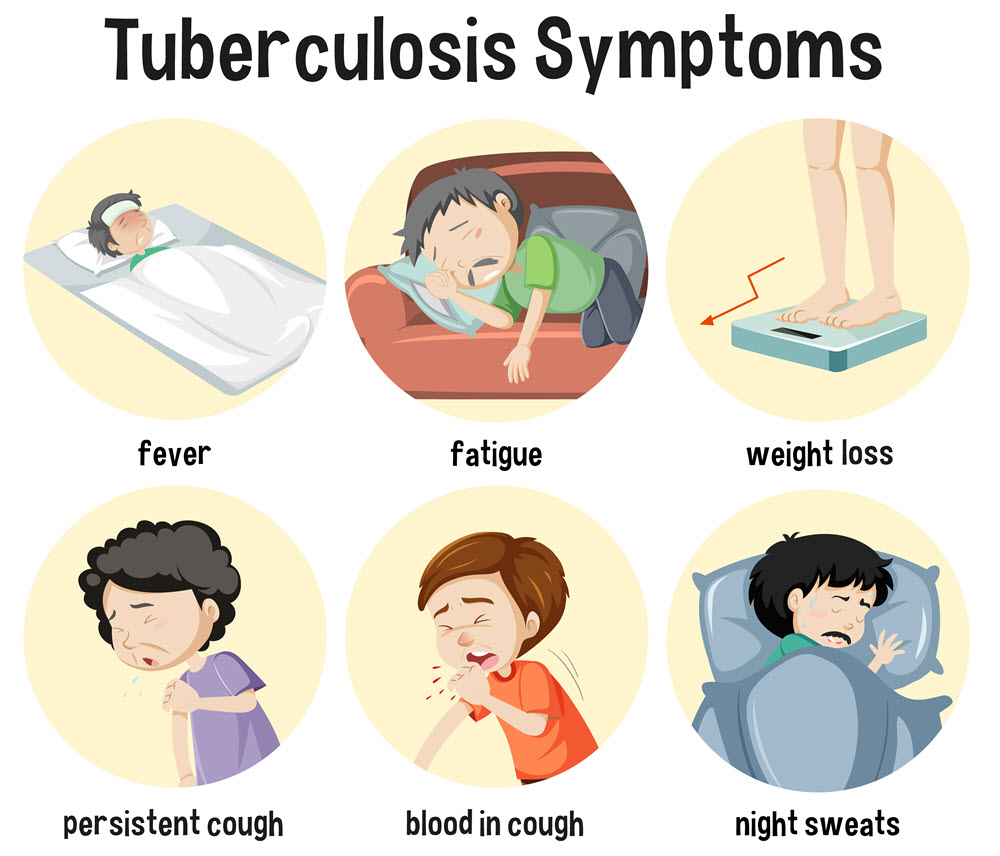Infections - Prevention, Diagnosis & Treatment
Tuberculosis: Symptoms, Causes and Treatment
By S.I. (staff writer) , published on September 06, 2021

Medicine Telehealth Health infection mycobacterium
What is Tuberculosis (TB)?
Tuberculosis is a major cause of death provoked by a bacterium, it is a contagious infectious disease i.e. it disperses from one human to the other through the air, when the infected individual coughs, spits, speaks, or sneezes.[1]
It is diagnosed by chest X-rays, microscopic study of sputum and body fluids. Latent TB can only be evaluated by blood tests.
Screening is important to prevent the spread of the disease. Prophylactic treatment should be given to those who are at high risk.
TB treatment can take a heavy toll on your health and finances. Therefore, prevention is always the best option.
What are the Symptoms of Tuberculosis (TB)?
Classic symptoms of active TB are:
- Continuous cough with blood containing mucus
- Night sweats
- Fever
- Chest pain accompanied by breathing difficulty and coughing
- Weight loss
- Exhaustion
- Chills
- Loss of appetite
Symptoms can also be classified:
- Tuberculosis that involves only the lungs:
Nearly all TB infections upset the lungs, which induce:
- An endless cough that subsides over 3 weeks and mainly brings up phlegm, which usually contains blood.
- Breathlessness that slowly gets terrible.
- Tuberculosis that flourish outside the lungs:
Rarely, TB infects parts of the body other than the lungs, like the lymph nodes, bones, joints, the digestive system, the urinary and reproductive systems, or the nervous system. Symptoms presented in these types include:
- Persistently inflamed glands
- Pain in the abdomen
- Pain and loss of function in the involved bone or joint
- Confusion
- A constant headache
- Fits
TB involving parts of the body other than the lungs is more prevalent in people with a compromised immune system.
What Causes Tuberculosis?
Tuberculosis (TB) is an infectious disorder caused by the bacterium ‘Mycobacterium Tuberculosis’ which mainly involves the lungs, but other body parts can also be affected. Nearly all infected people do not display any symptoms and are referred to as cases of latent infections.[2]
A small proportion of latent tuberculosis cases advances to active disease which, if untreated, can be lethal.
What are the Treatment Options for Tuberculosis (TB)?
Treatment options for TB are classified based on its type:
Treatment for Latent TB:
For curing latent TB, medication is only recommended if the patient is at high risk of developing active TB. Common drugs prescribed for latent TB are antibiotic Isoniazid or Rifampin or a combination of both taken as a single daily dose for six to nine months.[3]
Treatment for active TB:
Active tuberculosis is treated with a combination of antibiotics for six to nine months. The definite drugs and length of treatment rely on age, overall health, and possible drug resistance. The drugs used include:[4]
- Isoniazid
- Rifampin
- Ethambutol
- Pyrazinamide
Treatment for Drug-resistant TB:
To cure drug-resistant TB, a mixture of Fluoroquinolones and injectable medicines like Amikacin or Capreomycin is prescribed for at least twenty to thirty months. Some cases of TB might develop resistance to these drugs as well.[5]
To reverse the resistance, other drugs are included in the drug regimen. These medicines are:
- Bedaquiline
- Linezolid
References:
- https://www.ncbi.nlm.nih.gov/books/NBK567737/
- https://www.ncbi.nlm.nih.gov/books/NBK554951/
- https://www.ncbi.nlm.nih.gov/books/NBK531231/
- https://www.ncbi.nlm.nih.gov/books/NBK138743/
- https://www.ncbi.nlm.nih.gov/books/NBK138752/
Find articles related to: Medicine Telehealth Health infection mycobacterium
More articles about Infections - Prevention, Diagnosis & Treatment
Back to the Health Tips Index




